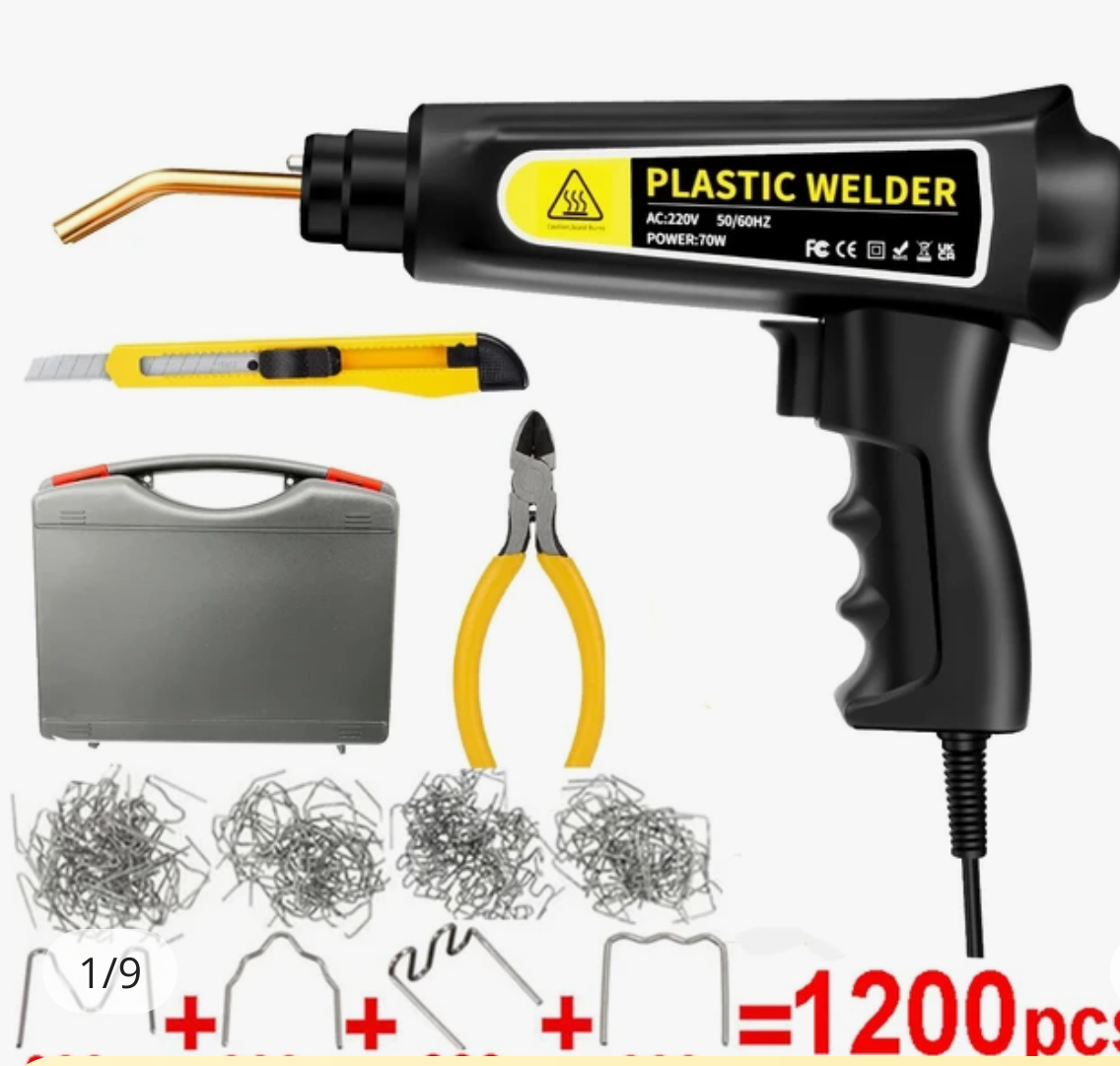I’ve just finished getting my laptop set up the way I like it, including maximising the RAM and upgrading the screen. I opened it up to use it, and the screws on the hinge tore through the plastic.
To top it off, the plastic on the bottom of the laptop, the side that’s been removed here, has also broken.
My wife definitely didn’t drop the laptop while she was tidying up though…
Yeah this is not a fun one, I have done repairs and now do retail this issue is insanely common. Pretty much all budget laptops have this threaded into cheap plastic and I have had many customers devices hinges fail within 4 months in retail.
From what I can tell you also got quite lucky the hinge snapped on the base and not the screen. I’ve had a couple customers unlucky enough to have it snap on the screen and shatter the glass and or LCD.
The cases where it doesn’t completely destroy the screen or base you can normally use epoxy glue, melting or something similar. But that still is normally a temporary solution it will probably break again. If that can’t be done or a more permanent solution is needed, I’ve found that repairs with a metal plate and bolt seem to last I’ve also seen some people just use an L shaped metal bracket and not close the laptop again…
Regardless its a really annoying thing, I try to purchase and recommend devices with Metal frames (base and screen). Unfortunately even mid range laptops are now following this trend of plastic screwed hinges.
Cheap laptops don’t hold up. I’ve seen so many broken devices which the screen just breaks off
HP?
seems like everyone is immediately suspecting HP, rightfully so… my HP also did this exact same thing and I had to epoxy it to the frame to get it back together
I’ve seen this issue on an MSI laptop. Looking into it I found the problem quite widespread. The hinge is way too tight and the mount point it weak
Laptop hinges are the worst, cant imagine how many laptops I’ve seen with cracked plastics where the hinges are.
That sucks.
Happened with my previous laptop and couldn’t find replacement parts unfortunately.
I’ve managed to find a replacement base, as that was broken too, but not this part. It looks like I should be able to fix it with some epoxy though :)
Used to do laptop repair. It’s insane how often this happens with the crappy plastic shells.
Yep, happens a lot, I’ve got a cute little pair of nuts that replaced the inserts in my thinkpad
HP by chance? Had this happen to a 360 HP laptop (and I almost never used that functionality!), repaired by replacing the backside of screen where it screws in. This of course required disassembling the whole damn laptop I was horrified by how cheap it was and now have a ThinkPad T480.
My HP’s hinge broke, too. I had to pack the entire back of the case with putty in order to fix it, and it’s still not quite right.
This is why if you need a budget laptop get something from a used business line like lenovo thinkpad dell latitude and hp elitebooks these will have far better quality and be (in some cases) more easy to repair
In fairness to them, this is a Stonebook branded Clevo laptop, and it’s a 7th gen i5, so it’s been doing well :)
ooh my old laptop had a problem like this too, but instead of ripping off it just got so rigid it would probably completely destroy the whole hull if i tried to force it open, to “fix” it, me and my cousin just opened the laptop and (carefully /s) completely removed the hinges (or at least the part of it that connects to the base of the laptop), now it is right beside me here hosting a jellyfin server with the screen being propped up only by a wi-fi router >:3
That was going to be its fate if I couldn’t get the parts :)
Did you open it without the backplate on?
Anyways this is crappy anti consumer design by the manufacturer.
Yes and no. The backplate was attached but broken, and I didn’t realise that the broken piece was where the third screw for the hinge was.
In fairness to the manufacturer, this is a 7th gen i5, and it was doing great until my wife ‘definitely didn’t drop it’ on the corner >.<
I don’t understand why you were downvoted for asking this question. I’ve literally watched techs cause this damage by trying to open the lid with the back cover screws removed.
Most laptops have at least one screw on each side that goes through both the back cover and the lid. If the hinge is normally affixed with 3 screws and you open the lid with one missing, each mount is taking on that extra stress.
Best practice is to reinstall those screws before opening the lid with the back cover removed.
I broke a hinge myself that way, learned it the hard way
Honestly, this looks like it would be repairable with the appropriate sized heat-press insert, and a longer screw. Granted, things are pretty tight in that area; but it looks like there is enough beef left on the underside to repair this ‘properly’.
You’ve gotta get those screws to the right torque after taking it apart. Too loose OR too tight and you’ve sealed your fate.
Laptop repair guy here! This problem is common in consumer grade laptops. As far as I am concerned, it’s purposefully weakly designed, because these break a LOT.
Not the hinge is broken, but the mounting points for the screws that keep the hinge in place. Sometimes it breaks on the bottom case, sometimes it breaks on the screen side.
We fix these issues regularly with epoxy (and massive skillz, lol). With most hinges, you can adjust the force a little lighter to relieve the pressure on the mounting points. That way it doesn’t fail again, after repair.
I very much hated working on hinge damage.
Machinist guy here!
Threads fail. Threads are generally the most likely thing to fail in any given mechanism. Generally, when the threads are expected to do more work than just sit there and not move, as in fastening a hinge for example, we try to make sure the threads are all the same kind of material.
I would never expect plastic threads to hold up to repeated use with an iron bolt inside. Something is going to give up, and it’s going to be the soft plastic threads, every single time.
Think about cheap as fuck IKEA furniture, any time they have a bolt to screw in, you install an insert first. We do the same thing in plastic, aluminum, shit even steel sometimes if we want the bolt to fail first.
I believe you misunderstood the problem, the threads are not usually the problem, the problem is the brass heat insert the hinge threads into, the insert just breaks off the plastic with the screw still threaded in, usually because the hinge is a bit too tight/rigid and puts a lot of force into the insert pulling it out
this seems to be the case in this picture as well
As far as I am concerned, it’s purposefully weakly designed, because these break a LOT.
Could be sacrificial because the plastic case is cheaper/easier to replace than whatever else would break instead of it were stronger.
Probably more so cheaper to mold the plastic case with weak threads than any other function.
This is correct and good advice. I’d like to add that it’s also an option to glue in a threaded metal insert in case a self - tapping plastic screw was used and the original thread is stripped.
I just used the threaded metal inserts and seat them with the soldering iron to use orignal screws and have had great luck
Edit/ I should clarify that it’s been a few years since I’ve done one of these repairs and may not be the best option on a newer/slimmer model
Absolutely, if there is enough plastic left, melting is one of the best options. That also enables mending plastic by melting in metal pins or strips via a cheap plastic welder for 10 bucks (success can be great, but it’s highly dependent on the geometry and how things broke).

Yup, I do a lot of 3d printed projects and use these all the time. They’re great
This is why I love the idea of framework laptops
Indeed, different price point though, but shouldn’t be more expensive in the long run. I like what they’re doing and live my AMD 13
How can I adjust the force?
Let the hate flow through you!
I just barely got this joke. Nice one
Actually if you want a serious answer, I usually try to apply force as close to the hinge as possible when opening and closing the lid. This way the full length of the screen isn’t acting as a lever multiplying the force on the relatively short span of the hinge mounting bracket.
I definitely agree this is too common a problem not to be by design.
by loosening the screws of the hinge.
Is it possible that some hinges have hidden screws or use a different mechanism?
Yes, absolutely. Not all hinges are adjustable, unfortunately. In fact, I’d argue that most are not. Just have a look at the hinges at your place (doors, cabinets, toilet seat etc.), most will be very simple mechanisms with no inbuilt adjustment.
You can adjust the play mechanically, of course - that is, through application of a certain amount of force via deformation, which can be a destructive process if not done carefully.
There are hinges that expose an axial screw that allows for precise adjustment of hinge friction, but I have not seen those used for laptop display lids (nor did I personally encounter those in the small dimensions you would find on a laptop) . You’ll find examples of those at Misumi or McMaster - Carr.
If your goal is to increase the friction in your laptop’s display lid hinges, you might find that simply tightening all screws of and around the hinge often does the trick. Even though the main axial screw is not meant to be user accessible, it serves basically the same function and can tighten up the hinge. Tightening the screws used for mounting will ensure the lid doesn’t wobble. You will have to (partially) take your laptop apart for that, naturally.
If your hinge doesn’t have an axial screw at all and uses, let’s say a pin, you might have to employ another method, but that would really depend on the actual mechanism being used.
I used to work in a computer repair shop. Unfortunately this is a lot more common than you might think, and it’s almost always due to poor quality plastic and nothing to do with the end user. Sadly I’ve yet to see a case where this is covered under the warranty either, but it’s worth a shot if you want to go through the headache of their customer support.
You can try epoxy like someone else mention, but it comes with a few problems you might encounter. First you can’t put too much epoxy or it’ll spill over onto the computer components (which could damage them) and as a result it may not hold. Second, even if it does hold you’re putting it over screws, which means you most likely won’t be able to remove those screws down the road if you ever have to repair or upgrade it.
You could also just leave the laptop permanently open and never touch the hinge. Some people already this anyways with their devices so for them it’s not worth the hassle. As long as nothing else is damaged and you’re careful with it, this can work too.
Ultimately, the best solution is to just replace the plastic casing part where it ripped out of, which is usually either the housing around the keyboard and track-pad, or the one behind the LCD. Sadly because all the parts are likely made with poor quality plastic this is likely to happen again down the road. In your case it looks like the former, the housing around the keyboard. For some devices the keyboard isn’t easily removable from this housing, so it’s probably going to require you replace the keyboard as well, unless you like dealing with tiny rivets.
Oh, and you probably don’t need to replace the hinge itself. like I said it’s usually the brittle plastic in the housing that’s at fault, not the hinge seizing and refusing to move.








